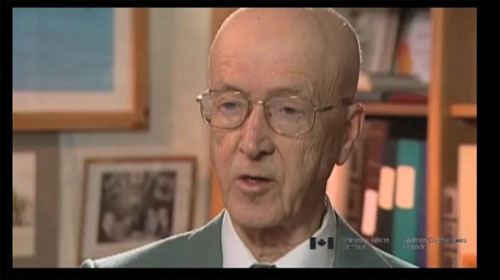Ships Looking Like Icebergs
Heroes Remember
Ships Looking Like Icebergs
Transcript
Description
Mr. Nordlund compares the ships icing up similar to an iceberg and how the men dealt with these conditions.
Hough Nordlund
Mr. Hough Nordlund was born July 17, 1922 in Kamsack, Saskatchewan. After his elementary school years, his family moved to Ponachi, Saskatchewan where he graduated from high school. Then Mr. Nordlund joined the Navy and trained on the HMCS Queen Regina. After initial training he was drafted to the ship, Prince Henry, doing offshore and inshore service around Vancouver Island. His main role aboard these ships was radio operator, receiving messages through morse code. During his service time in the navy, Mr. Nordlund sailed on other ships, the HMCS Kootenay and Alberni. Mr. Nordlund was an active soldier during the D-Day invasion and occupied the role of skipper onboard the landing craft LC3 taking troops to Omaha Beach. Mr. Nordlund finished his service onboard the HMCS Kootenay and had a few runs to the Murmansk before leaving the navy. After discharge Mr. Nordlund served with the militia and worked with the Federal Government in the Fisheries and Oceans Department, retiring with 38 years service.
Meta Data
- Medium:
- Video
- Owner:
- Veterans Affairs Canada
- Duration:
- 1:23
- Person Interviewed:
- Hough Nordlund
- War, Conflict or Mission:
- Second World War
- Branch:
- Navy
Related Videos
- Date modified:




